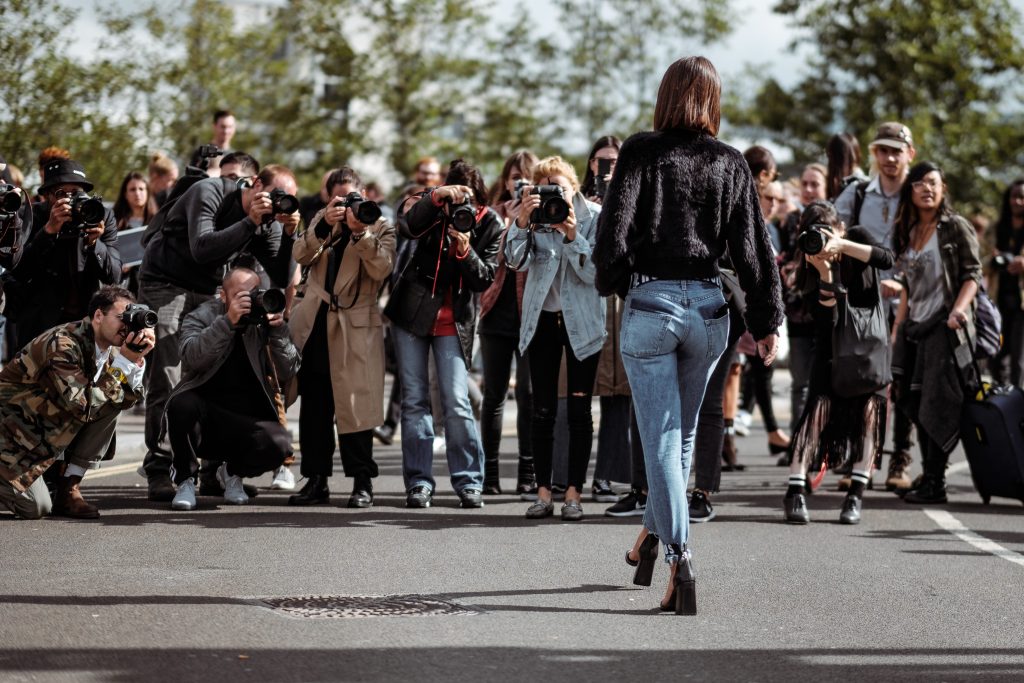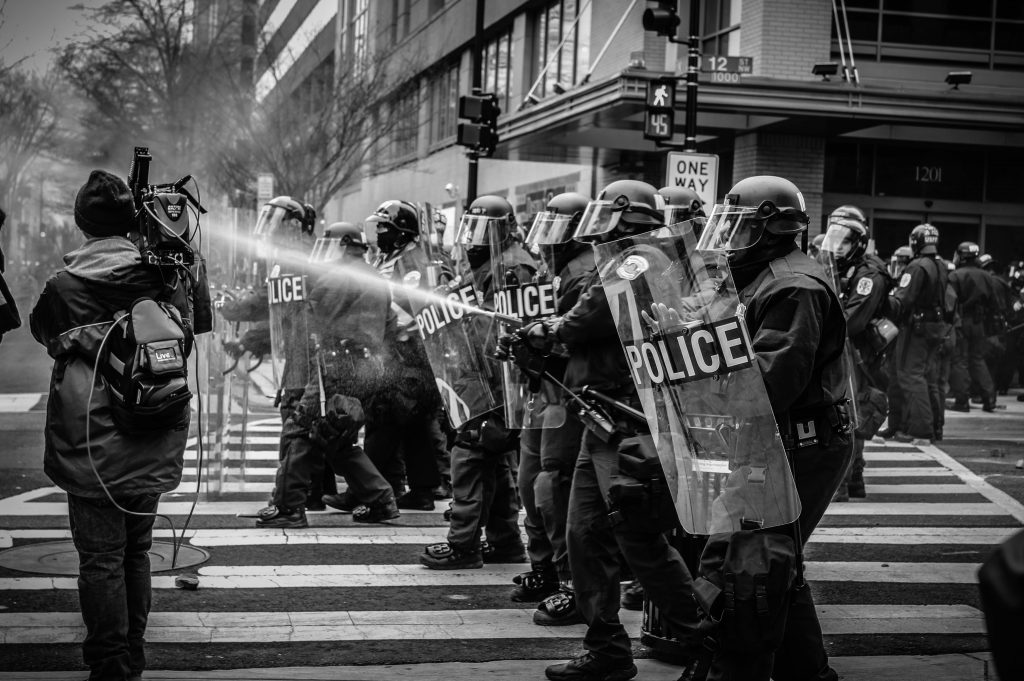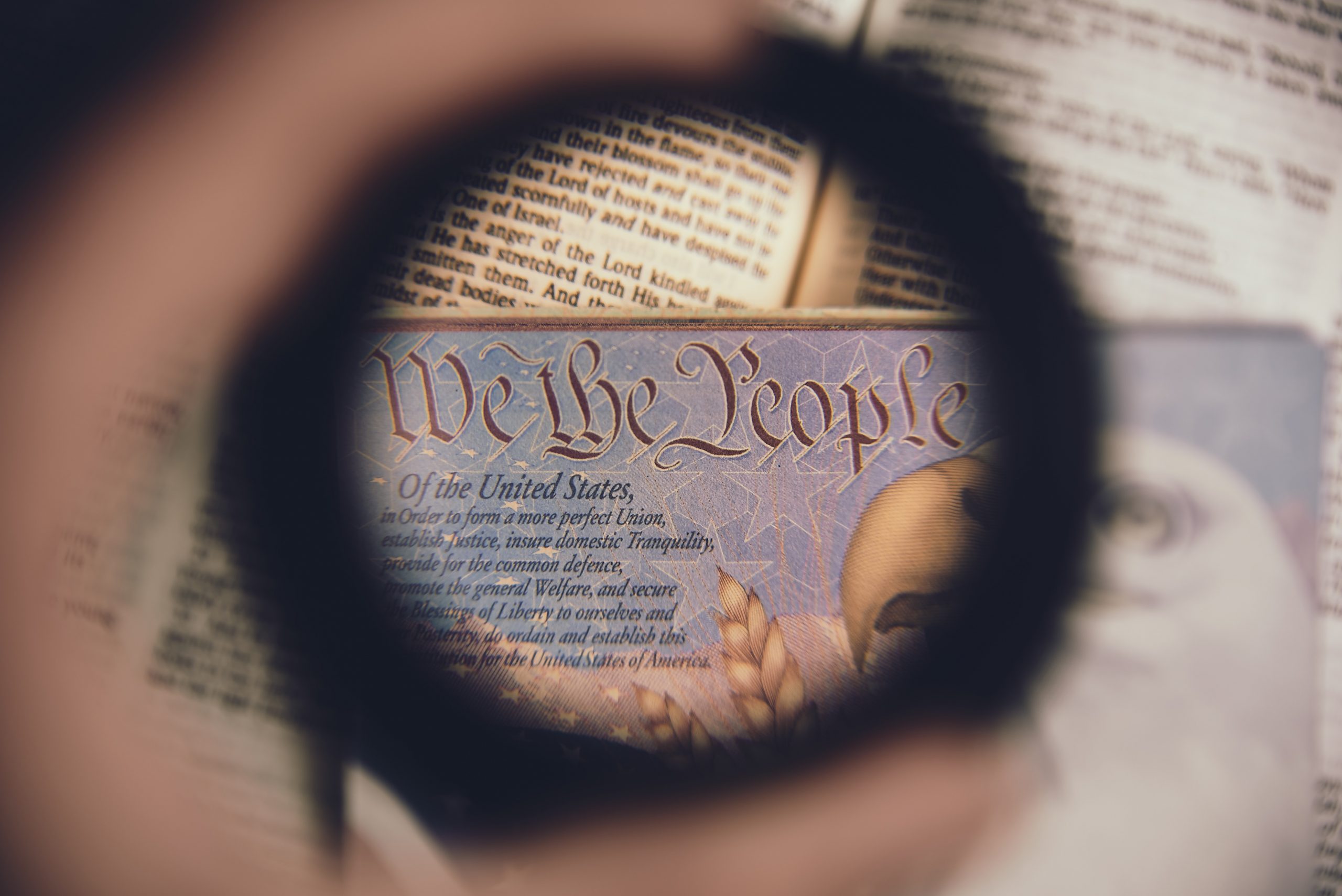Taking photos or videos in public? To protect yourself, you need to know about photography and videography rights in public. In this guide, we will go over what you need to know to stay within the bounds of the law. Let’s begin.
Does the First Amendment Protect Photographer Rights?
“Congress shall make no law respecting an establishment of religion, or prohibiting the free exercise thereof; or abridging the freedom of speech, or of the press; or the right of the people peaceably to assemble, and to petition the Government for a redress of grievances.”
The First Amendment protects different types of freedom: religion, peaceful protests or the right to assemble, petition, and press. Indeed, The First Amendment of the U.S. Constitution does protect the freedom that the press may exhibit. Also, the government does not have the right to control what the press publishes.
So, if you are taking photos or recording videos in public places, you are protected under the First Amendment as a part of your free speech rights. You would think that this is a clear cut situation for photographer rights and videographer rights. But you would be mistaken.
Photographer Rights in Public or Private Locations
Yes, if you are taking photos or videos of one of the monuments in the U.S., you are legally protected. But the non-legality of it all enters into matters under certain conditions. These include if you are using a telephoto lens, tripods, if you maliciously use a hidden camera or if your camera has a microphone affixed to it.
Further, if you are shooting someone or something that is located on private property but you are standing on public property, that is a problem. The reason is that if you are in your own home or dining in a restaurant, you have an “expectation of privacy.”
But the First Amendment does not apply to private property owners. So, in certain situations, a private owner or private business can restrict your photography rights or videography rights. What’s more, photography and/or videography rights restrictions on private properties must be posted front and center where you can easily see them.
What is a Public Location?
Also, locations that are either public or private can become a little fuzzy in their definitions. A public place is a park, streets, sidewalks, etc. Yes, you can take photos in these locations. But if you use your photos and post them online as your own, it may be problematic.
For example, let’s talk about what celebrities have complained about when they enter a public bathroom. Yes, you have an “expectation of privacy,” duh! But someone has decided to take a camera into the public bathroom to try to take a photo. This is illegal.

In public locations, just because you can take photos or recordings, it doesn’t mean that you should. Indeed, this is true especially when your motive is to make a financial gain for yourself in a public space.
Moreover, the freedom to film in public or the freedom to photograph in public with the intent to commercialize demands written consent. Using someone’s likeness or image for financial gain directly impacts a person’s right to privacy.
As you can see, the difference between using photos/videos for commercial gain with or without consent is a little grey. Further, this is especially the case when posting material on social media sites or entertainment blogs without permission, an endorsement, or a written release. Undeniably, this happens a lot.
The Supreme Court and Freedom of Speech as Pertains to Photographer and Videographer Rights in Public
Photographer and videographer rights in public is a subject relevant to TV shows like those where cops pursue criminals. Do you have a right to capture this sort of action on film and post it?
Law enforcement officials definitely don’t have the First Amendment right to confiscate a public citizen’s camera. If the official’s intention is to bolster their case against a criminal, then they need a court order and must ask for your permission.
However, if the officer is on camera doing something that seems unjustified, then no, they can not simply take your camera away from you. Officials may demand that you as a citizen stop taking pictures of an incident. So that things don’t escalate, stop photographing or videotaping.
In general, a court will abide by the officer’s judgment especially when the officer’s defense is that your presence impeded their efforts. But legally, most regional appellate courts have agreed that when you record a law enforcement official, your constitutional rights are protected.

Nieves v. Bartlett
There is a legal precedent, Nieves v. Bartlett. The case concerns free speech. In this case, a superior court found that a law enforcement officer only needed to prove probable cause for an arrest.
The First Amendment protected citizens who were photographing and videotaping these actions on public streets.
However, just this year in May 2019, this ruling changed in favor of law enforcement officials. A divided Supreme Court performed a certiorari, or review, of this ruling through Judges Stephen Breyer and John Roberts. In a majority opinion, the Supreme Court determined law enforcement officers have the right to arrest people taking photos or videos that they deem inappropriate or disruptive.
What does this Supreme Court ruling on public photography and videography rights in public mean for the public’s right to photograph or videotape actions taken by officers? Law enforcement officers have their hands full fighting crime. So, the Supreme Court believes that probable cause is enough to allow them to detain, confiscate, and arrest citizens.
The Nieves v. Bartlett 2019 ruling made it hard for a citizen to claim First Amendment rights against an officer. A citizen must now prove in their case that the officer did not have probable cause for an arrest or confiscation of their property. Only then do First Amendment rights apply.

In other words, the Supreme Court produced a dual favorable outcome. First, the Court allows the First Amendment clause to protect the public. Secondly, legal claims against law enforcement officials are vastly reduced.
The Nieves case makes it more difficult for a person to establish a malicious First Amendment claim against law enforcement officers. In summary, a plaintiff must now prove that a law enforcement officer did not have probable cause for the arrest. This is required before pursuing a First Amendment retaliation claim in most cases.
Videographer and Photographer Rights for Stringers
What is the likelihood that a “stringer” can continue to work because of how they perform their job? Many TV stations, newspapers, and photo-journal publications hire stringers to take photos or videos of events and people.
Granted, a stringer sounds like someone who is lurking behind a bush to take photos. In today’s modern society, Stringers are referred to in court cases as freelance videographers or photojournalists.
As a memorable depiction of a stringer, do you remember Peter Parker in Spider Man getting hired to capture pictures of the spider hero in a negative light? Peter as a stringer provided photos to the Daily Bugle.
A freelance journalist can work for news media, an entertainment media company or they can work on their own. Typical freelance photojournalism work is monetarily fruitful if a stringer acquires several clients who are willing to pay for their work.
A stringer provides their own equipment. A professional ENG (electronic news gathering) camera is necessary. Equipment can also include a smartphone or a GoPro. Granted, there may be stealth activities involved in some assignments. But there are also legitimate interviews.
As a neophyte, you can be just one misstep away from a legal problem when taking photos or videos in the public venue. Therefore, become familiar with the do’s and don’ts. Is it legal for a stringer to use photo-lens equipment?
What Are Your Photographer Rights in Public?
For this reason, you should become familiar with key photographer rights by reading Photographer’s Survival Manual: A Legal Guide for Artists in the Digital Age. This succinct manual provides A to Z information on photojournalism and how to protect your rights.
Remember that just because you are standing on public property taking photos, it does not mean that you are legally within your rights. If your activities involve snapping photos of a person or a private event in a restaurant, a theatre, an entertainment park like Disney Land, etc., the owners can deny you entry with your camera.
Also, read the Legal Handbook for Photographers: The Rights and Liabilities of Making and Selling Images. This book helps photographers understand their shooting, planning, selling, and publishing rights.
You must find out what the laws and rules are in the state where you are working. Note that you also may not block foot and/or vehicle traffic while shooting.
You must not cause a hazard or interfere with firefighters, the police, medical officials, or certain entertainment activities.
Social Media and Photographer and Videographer Rights
What about social media? Camera technology has vastly improved to the point that pointing your phone and taking a picture can produce professional-looking images. The public wants to quickly post everything they view online. But when you take a photo of someone, then the rules change.

To stay out of trouble, even at an innocent family gathering or neighborhood event, please get permission. If you don’t, you could find yourself in court.
On media sites like YouTube, you can place images of people you know online without permission. However, there is no freedom to film a stranger in public and then place their picture online. Why? This invades their expectation of privacy rights.
Remember, the freedom to photograph in public is legal according to the First Amendment. Just don’t forget that freedom has limitations.

